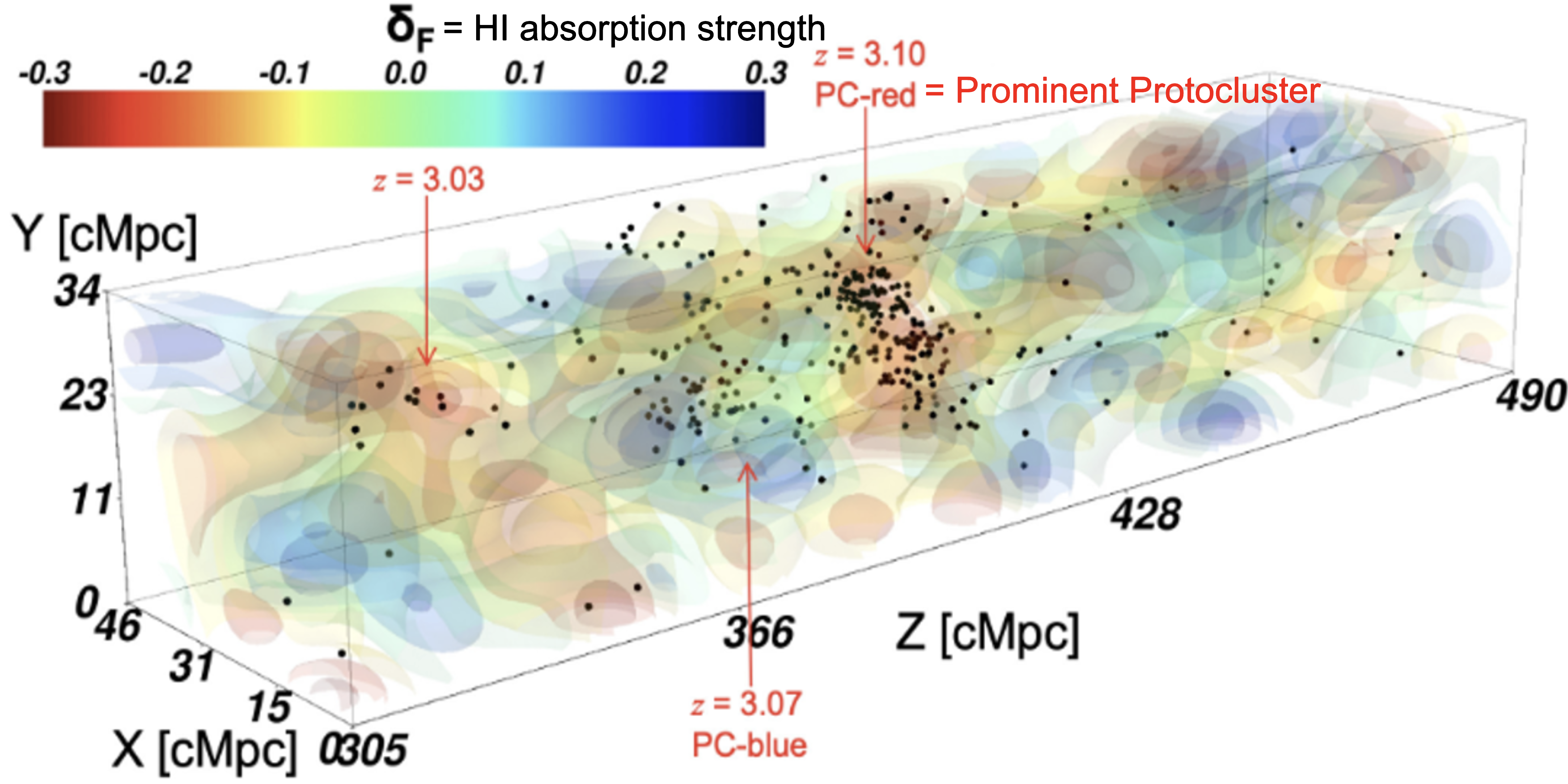Tsukuba Uchu Forum
138th Uchu Forum
スペクトル吸収線から探る原始銀河団ガス
Ken Mawatari
University of Tsukuba
Abstract
In discussing the formation and evolution of galaxies, it is essential to know how the material circulation (inflow and outflow of gas) to and from intergalactic space occurs. Observing absorption lines in the spectra of distant sources as background sources is a classical method to study the intergalactic material (IGM), but recently the use of galaxies as background sources has enabled us to study the spatial distribution of the IGM with improved spatial resolution (IGM tomography; Lee et al. 2018, etc.). The increased spatial resolution allows us to study even the perigalactic material (CGM) scale (e.g., Adelberger et al. 2005; Prochaska et al. 2014; Mukae et al. 2020). The absorption lines used range from neutral hydrogen (HI) Lya to metal absorption lines such as CIV and MgII, but observational constraints still limit the number of absorption lines that have been spatially resolved in the distant universe. It is also still unclear how the properties of IGMs/CGMs are affected by the density environment on a large scale. In the SSA22-HIT project, we have obtained K In the SSA22-HIT project, we performed deep spectroscopic observations with Keck/DEIMOS of the SSA22 proto-cluster region with a significantly large redshift of 3.1 and constructed a high-redshift galaxy catalog with a wide field of view and high object density by aggregating previous spectroscopic data in the same region (Mawatari et al. 2023). HI Lya absorption lines were extracted from galaxy spectra to produce HI tomography maps over a redshift range of 2.7 < z < 3.6, including proto-clusters (Mawatari et al. in prep.). The results show not only a correlation between galaxies and HI Lya absorption on the IGM scale, but also suggest the presence of a component other than the HI gas associated with individual galaxies (Intra-ProtoCluster Medium; IPCM) in proto-clusters. We have also investigated the spatial distribution of HI on the CGM scale with respect to galaxy clusters and report our results so far (Mawatari et al. in prep.).


 和 英
和 英